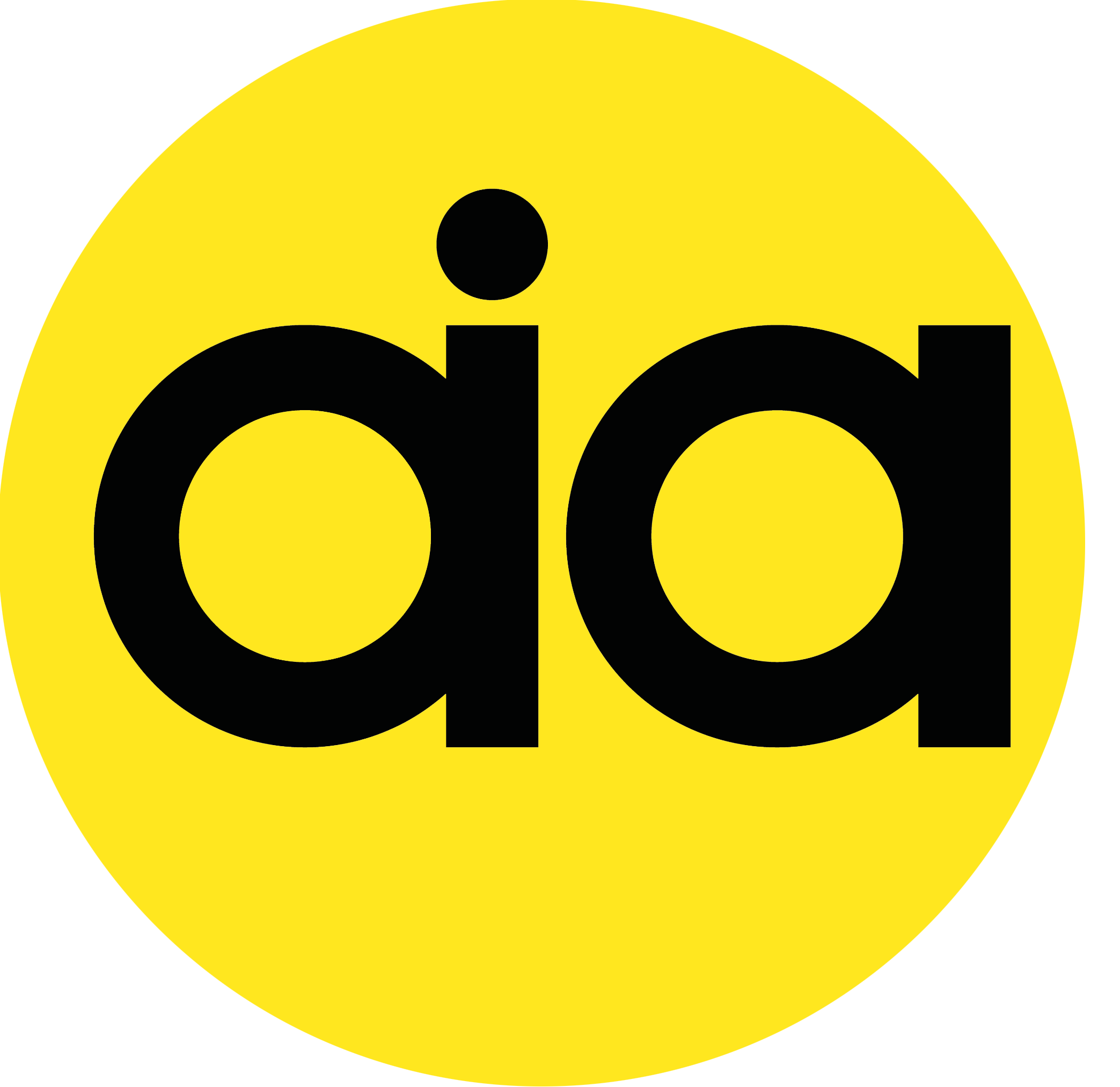
Blending Innovation and Creativity: An Interview with Matteo Gawlak on popUP’s Unique Approach to Architecture and the Integration of AI
Interview with Matteo Gawlak
Architect and Founder of POPUP
Dubai, United Arabic Emirates
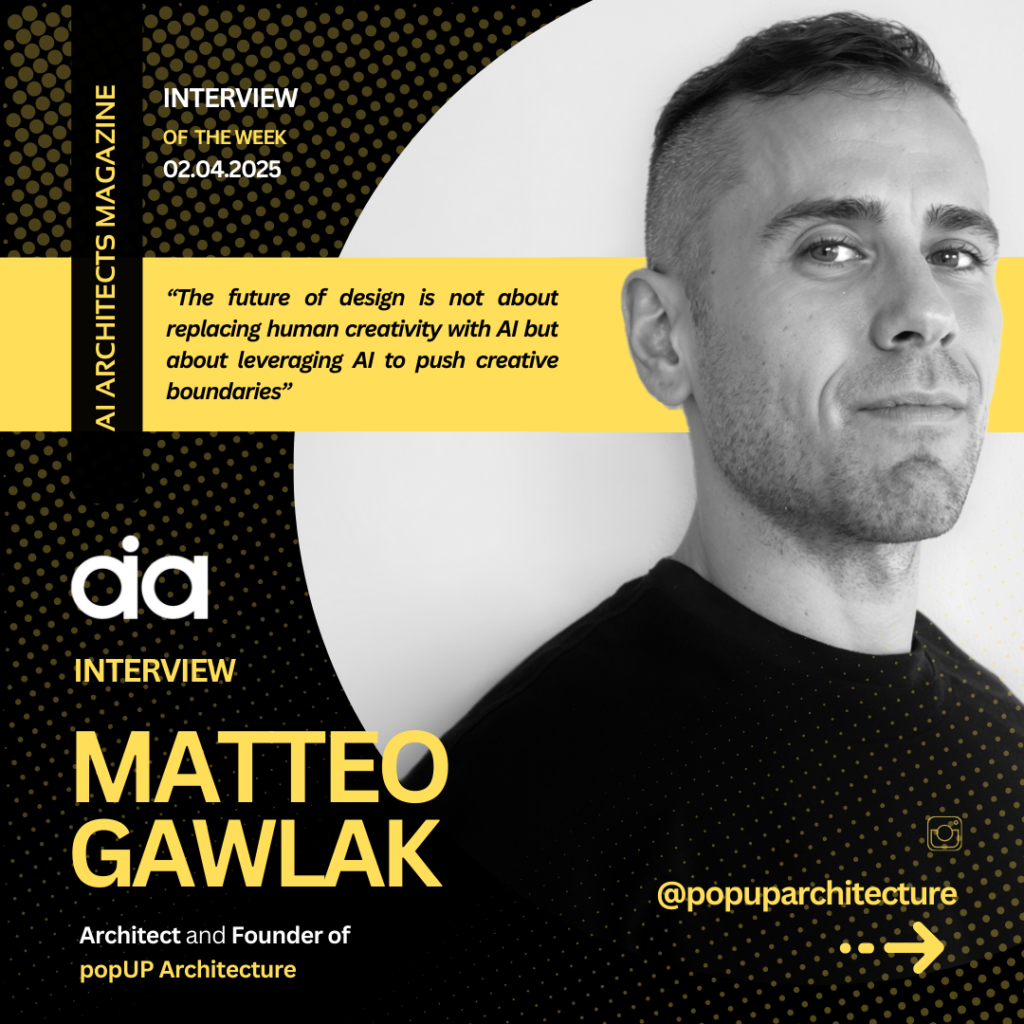
1.Can you introduce yourself and your background in architecture or design?
“I am Matteo Gawlak, architect and founder of popUP architecture, from Salento, Italy, currently based in Dubai. After graduating from Politecnico di Milano (BArch and March) I moved to New York to work for BIG (Bjarke Ingles Group) where I contributed to iconic projects such as The Spyral, and Resilient by Design San Francisco. I then relocated to London to join Foster + Partners where I worked for over 5 years. During this time I became an associate and had the chance to follow and lead multiple projects on a variety of scales around the world.
I started popUP to develop projects and graphic languages to be more entertaining, crafting spaces and images able to engage people’s lives and attention. A strong concept that becomes buildable, something unexpected and crafted, going beyond the ordinary experience. Today I have the opportunity with popUP to present spaces that are not anonymous commercial volumes but detailed curations from the experience of the space to the realization of the construction, doing so in keeping with the original values and design strength, with AI as part of the team. What started in 2022 as a mere curiosity, with simple text and inputs in Midjourney, is today a focus in the studio where I implement AI as an active part of the workflow and strength of our proposals.”
2.How do you integrate AI into your creative or design process?
“AI becomes an active part of the popUP team and design process through brainstorming, researching, quick visualization, developing options, high resolution presentations and marketing images. From the beginning, even before the actual design, AI is part of my workflow in the research with Chat GPT, collecting information to start the design and make it relate to the place and its local identity and culture. I like to make the design specific to where it is based, a local experience translated into something innovative and unique that belongs to that place only. That initial information usually becomes a first sketch (yes, I still do hand sketches and collect thoughts and ideas in a sketchbook) or just simply keywords to base the project on. Here is where AI becomes a design tool. Those main words become a prompt in Midjourney, giving me the opportunity to see and visualize different options and understand how the design can be assembled. Creating a collection of images, a sort of Pinterest mood board, to work with and understand from the beginning the necessities and taste of the client. When there are words instead of sketches, I use StableDiffusion, together with quick Rhino models visualization, to see what the project can look like or develop options of the same camera.
Nowadays I also like to sketch directly on my laptop or ipad and on generative AI tools like KreaAI. I recently had the opportunity to test the first beta of FormasAI where I can import 3D objects (rhino massing) or sketch in 2D or 3D and play with prompts to quickly visualize the idea and what it would look like. The final step in the workflow would be to enhance the quality of the image and give that final touch of reality and detailing with MagnificAI..”
Living Pop
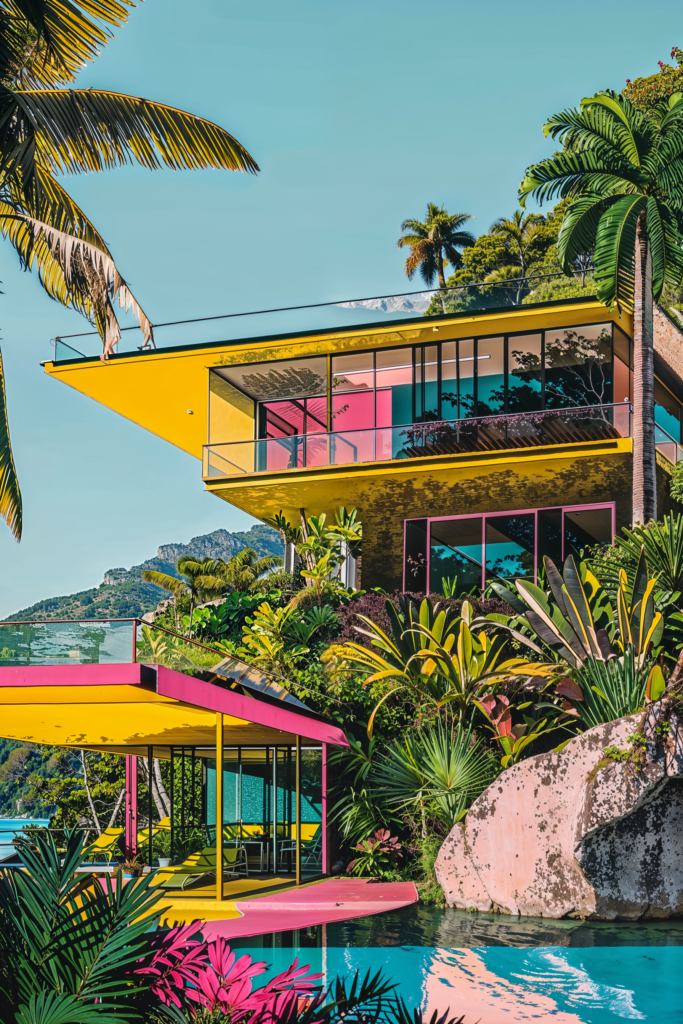
3.What are your thoughts on AI-generated architecture competitions and their impact on the industry?
“It’s part of the evolution of our job and how we develop a project. We can’t ignore the technologies and new tools we have available to speed up the workflow and align it with client’s and market requests, increasing productivity and quality. AI, seen as something that “will steal our job”, is actually another powerful tool that we have to control and we, as
designers have to understand how to make it work for us, not vice versa.
In the end AI won’t make the project because it will always need the architect behind the technology to put in the right information and drive through the final result. The role of the designer is now more crucial than ever because AI won’t be able to produce a good outcome if the information is not correct: it is a dialogue between the AI and the designer which does not diminish the value of human input but rather expands it, emphasising the architect’s ability to guide and interpret the output of the AI.
The power of AI is not only in its ability to improve the production of images, but also in its capacity to explore design solutions that may not be immediately apparent through traditional methods. While design solutions are infinite, our imagination is usually restricted by our personal backgrounds and references we can find on the internet: AI opens up a wider range of solutions that we can evaluate and evolve. This doesn’t mean the platform is designing for us, but that we are designing through the prompt and carefully crafting it to visualise and shape our idea.
The reality is there is not one prompt working or tool making everything for us without effort or a well-made process: behind the final image there is a complex network of variations, changes, and inputs, where the architect designs not only the space but writes the story of how the space is designed. With AI the architect becomes a storyteller where the prompt is the story of the project we want to design. Is not something to be afraid of but a technology we need to introduce in our daily workflow to optimize time and increase the quality of our work, understanding that we have a stronger role in guiding all those tools.”
4.Can you share a specific project where AI was a key tool in the design or visualization process?
” Starting from a personal research on visualisation and graphic language, AI was a crucial part in identifying what could be the pop way to present a project. It wasn’t just a prompt asking for a pop style visualisation but a series of studies where I tried to present a project in its main elements while still keeping open who watched the image to build part of the reality and how the space could be.
Nowadays super realistic renderings immediately give back a strict final outcome that our mind will consume in a couple of seconds without even questioning further possibilities or creating more interest in understanding it. In our current “content-based” reality, shaped by social media and the average user’s attention span of 8 seconds, images should be able to grab our attention and leave questions and uncertainty for our minds to resolve. Focusing in this field of research I tried to shape this graphic language that mixes reality with collages and illustration techniques, where colours and textures give freedom to the audience to shape their own reality from that single image while holding their attention.
Using Midjourney and StableDiffusion I was able to mix those different graphic techniques, applying them to sketch renders or realistic images, in order to craft a base prompt and styles I could apply to the different works. This “language of pop” didn’t stop at the graphic expression of the project but appears also in their design, creating spaces that could be entertaining for people experiencing and living them, giving clients something more interesting and unique.
In one of my latest projects for a winemaker in Italy, in a prime location between the hillsides of Tuscany, the client was really interested in how we could express the strong local identity to avoid being invasive in such a unique landscape. AI was crucial from the first meeting where I was able to present various options in order to understand the client’s taste, shaping different solutions and playing with materiality and shapes through Midjourney. AI grants the chance to create a quick portfolio of solutions and give the client a real overview of what the design could look like. Fascinated by the concept of the “natural shape”, with AI I further developed and explored the wide opportunities offered by such unconventional geometries. From a series of explorations AI is now helping in the evolution of the design to understand and manage different and complex organic geometries, implementing the rhino modelling with the visualisation of the surfaces and realistic outlook of them to present to client and authorities. “
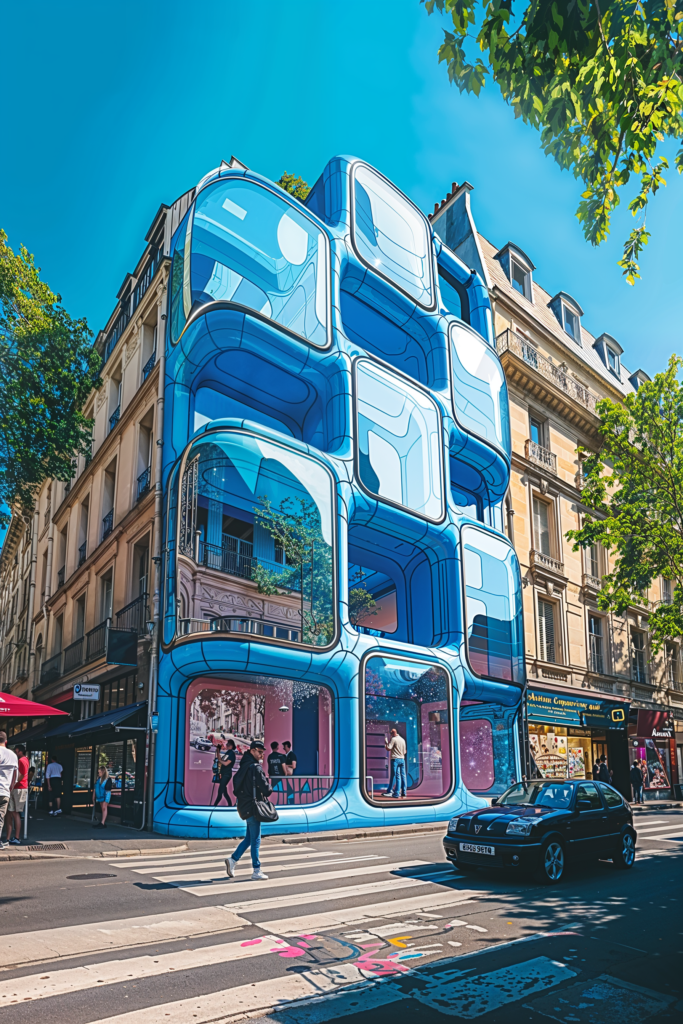
5.What advice would you give to architects or designers who are looking to explore AI in their work?
“Usually architects and designers in general, even if they promote progress and evolution in their project, don’t really like to change their methods and process of designing. Generally being anchored to a traditional workflow, just because “it’s always been the way and it works”, so why change it? There is no single way to design, methods are evolving, and AI is becoming an integral part of that evolution, and designers should create their own methods. Is not just a crafted prompt but also a personalized and unique way each designer can use to create a method that better fits their necessities.
Rather than seeing AI as a rigid or predetermined system, architects should approach it as a set of adaptable tools that can enhance their workflow without replacing their expertise. AI is not here to do the work for us, it’s here to assist, augment, and expand our creative potential. The architect remains in control, making the decisions, guiding the design process, and shaping the outcomes. The key is to be open to integrating AI into the workflow, not as an external force but as an extension of our thinking. With a wide range of AI-powered tools available, designers should explore different options, experiment, and find what works best for their unique process. Whether it’s for conceptual exploration, generative design, optimization, or visualization, AI can help refine and accelerate our work. The more architects are willing to experiment and integrate these tools, the more personalized and efficient their workflow can become. The future of design is not about replacing human creativity with AI but about leveraging AI to push creative boundaries. The challenge is not whether or not to use AI but how to use it in a way that aligns with each individual vision and approach, creating your personalised way to design. .”
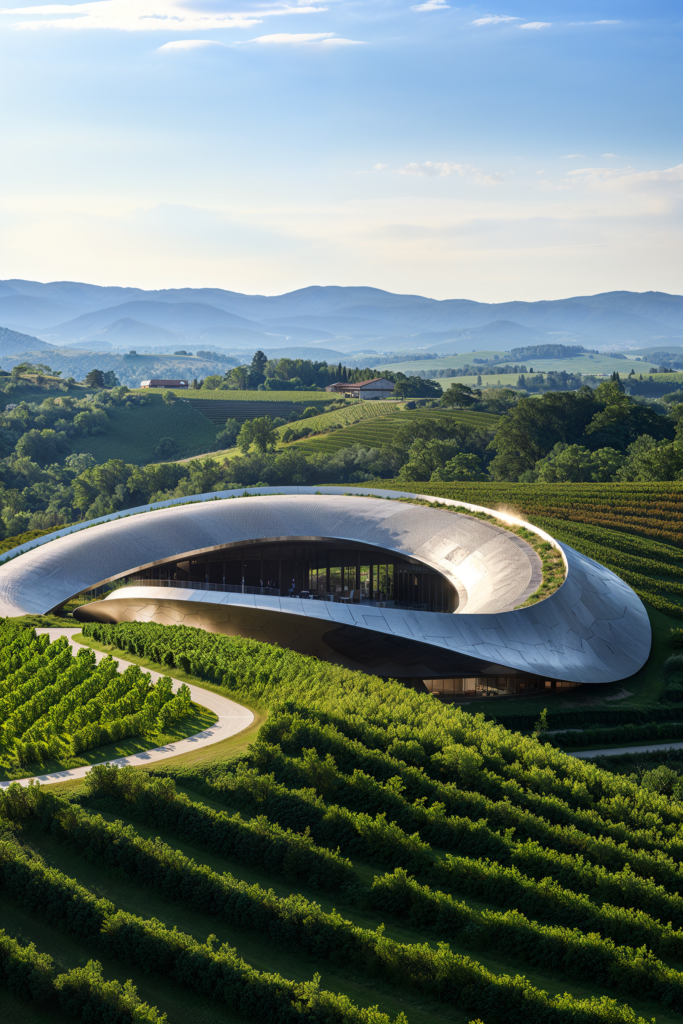
6.What tools or software do you find most useful for AI-driven design?
In this I might be old school, but for me Midjourney and StableDiffusion are the most helpful and flexible tools available because they give both the opportunity to work on text base and on background images from 3D modelling or sketches. What I like about these is the fact I have the flexibility to control the outcome and to explore the different parameters and the solutions. Aside from the quality of the result, and how trained the bot is, I have the chance to work further on a single image and develop it even more, creating options and variations. They offer a comprehensive use and range of options that I can maximise with a single subscription.
Follow Robert on Instagram for more creative Ai-Assisted designs: @popuparchitecture
